Red-spotted Purple (Limenitis arthemis)
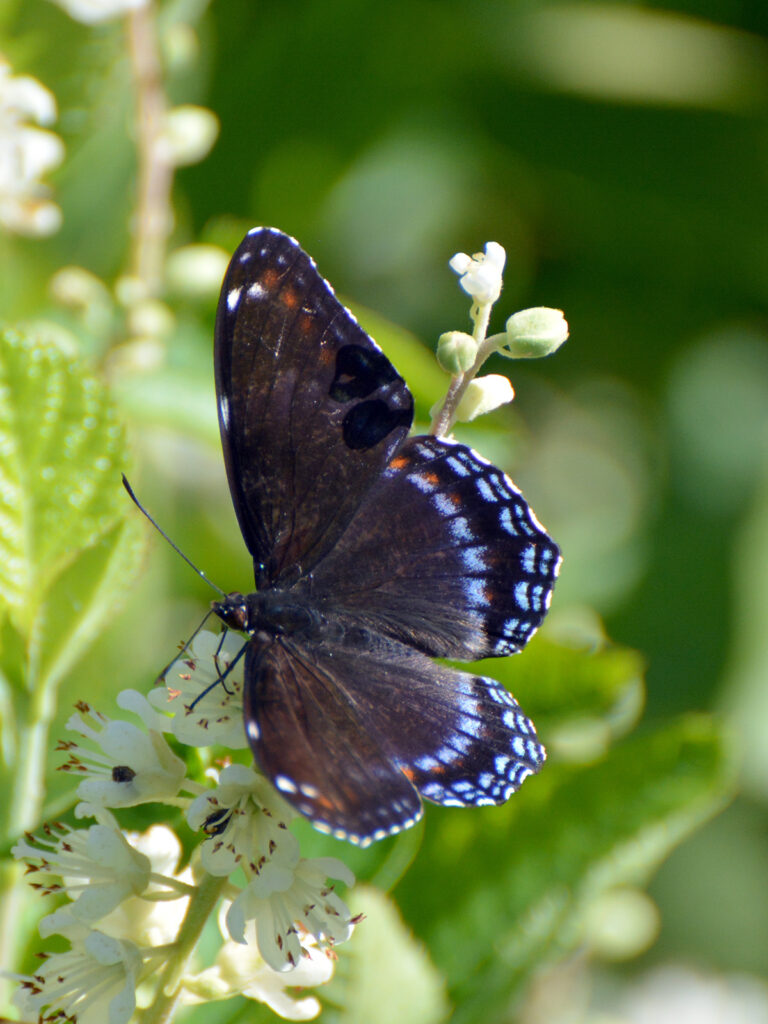
In 2015, when we first saw this butterfly in our yard we thought it was an entirely new butterfly for our yard. Then when I discovered what it was (through BugGuide.net), I was amazed to learn that it’s a form of the white admiral butterfly, which has appeared in our yard every year.
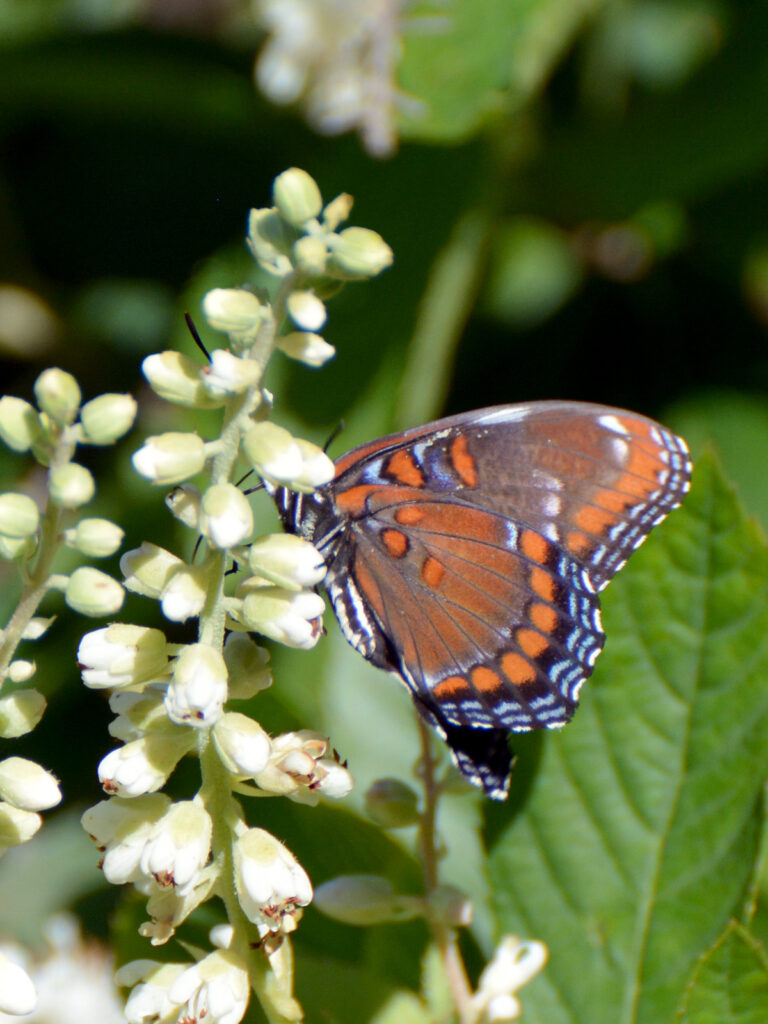
The red-spotted purple apparently is a more southernly version of our usual white admiral. Maybe a sign of the changing climate?
HOST PLANTS: Trees and shrubs such as wild cherry (Prunus), oaks (Quercus), birch (Betula), willows (Salix), and shadbush (Amelanchier).
More red-spotted purple info at Butterflies and Moths of North America
White admiral (Limenitis arthemis)
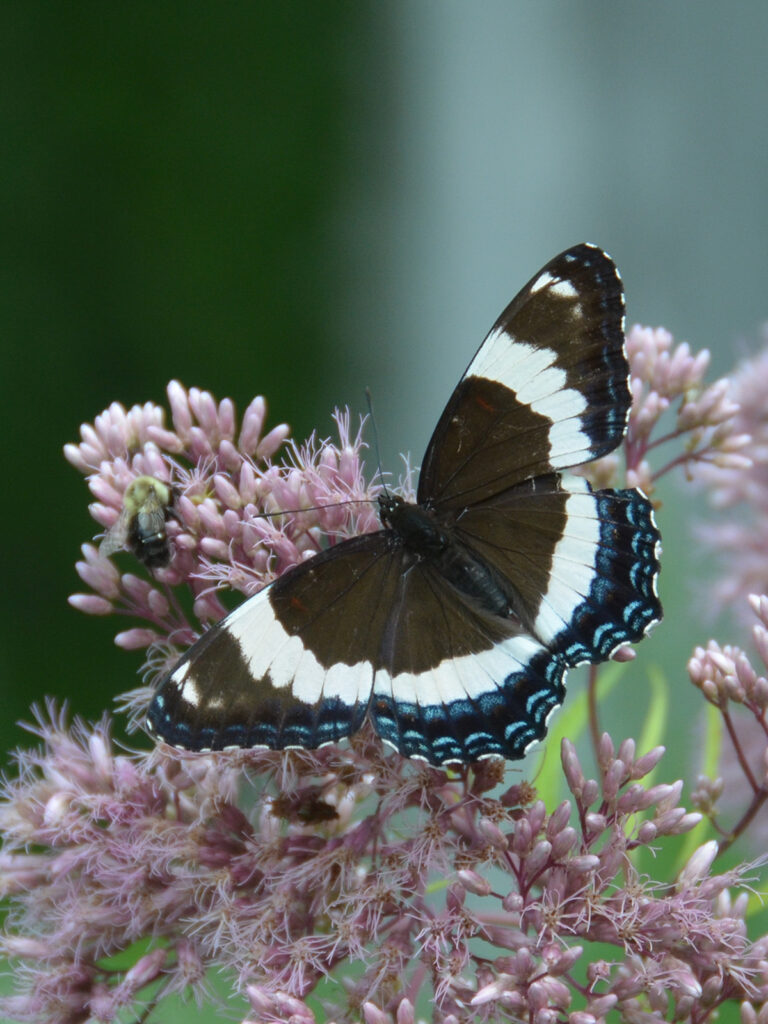
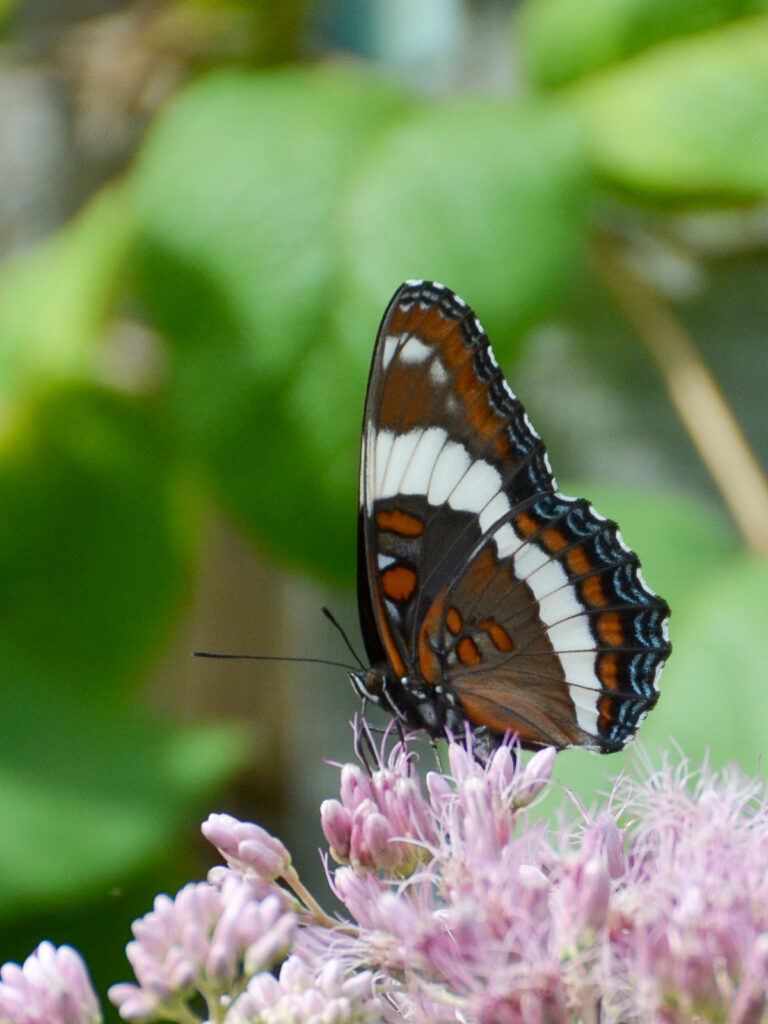
We haven’t seen these as often as red admirals.
HOST PLANTS: Birches, aspens
More white admiral info at Butterflies and Moths of North America
Viceroy (Limenitis archippus)
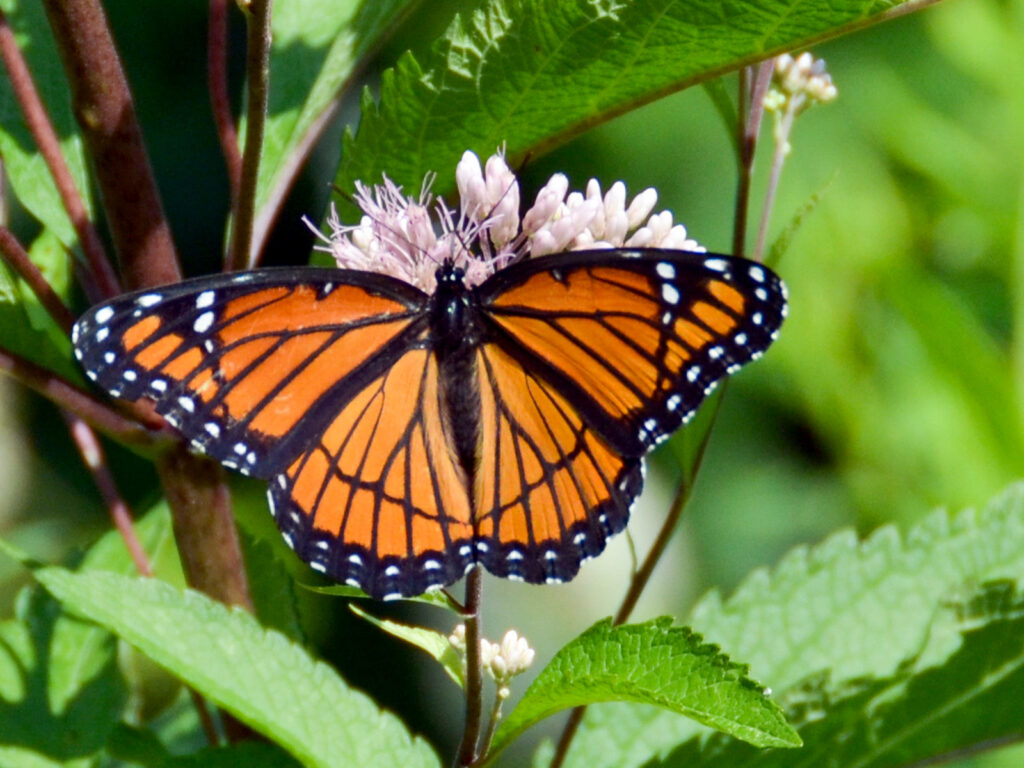
We haven’t seen these in our yard frequently, but it’s easy to mistake them for a monarch at a distance so we may have had them here more than we realize.
The biggest visual difference is the horizontal-ish line through the wings.
HOST PLANTS: Trees in the willow family; poplars and cottonwoods
More viceroy info at Butterflies and Moths of North America
Monarch (Danaus plexippus)

The female with the wider black lines is on the left and the male, with its two spots on the wings, is on the right.
Truly a “monarch” of the butterfly world (especially here in the Northeast). I especially like it since it floats through the yard more slowly. Here’s more information about monarchs in our yard.
HOST PLANTS: Milkweed! ONLY Milkweed!!!
More monarch info at Butterflies and Moths of North America
